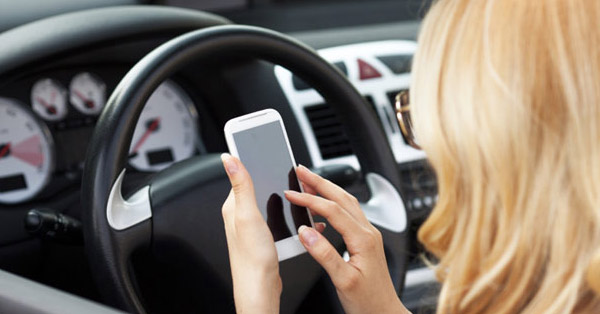It is an unfortunately common experience to see a driver drift over the lane marker or onto the shoulder of the highway, only to notice his eyes are on a cell phone, a taco or some other form of preoccupation. When you consider that a car at 55mph travels the length of a football field in the time it takes to read an average text message, it is no wonder that distracted driving is a leading cause of death and injury on our nations highways.
Each day in the U.S. an average of 1,161 people are injured in crashes involving distracted driving. In the same day, a distracted driver kills over 8 people. Yet, despite increased public awareness of the problem, distracted driving continues at a disturbing pace.
Using a hand held electronic device while driving is illegal in almost every state including California. A driver who injures or kills someone while using a mobile electronic device can be held legally responsible for the accident. In many cases, proving distracted driving can be difficult. It is possible that the driver will admit to police of being distracted at the time of the crash, but not likely. If the driver is convicted by a guilty plea in court, those court records could be used as evidence in a civil suit. It is often, especially with first time offenders, that these cases are pled to a lesser charge. An injured victim of the distracted driver, through his attorney, should contact the prosecutor and ask the prosecutor not to offer a plea deal.
In other distracted driving cases, there may have been a passenger in the vehicle who was witness to the distracted behavior. An area surveillance video camera may have captured the driver on his phone at the time of the crash but those instances are rare.
The best way to prove a driver was talking or texting at the time of the crash is to obtain the cell phone records. Cell phone records may be obtained by getting the defendant to agree to release them but that is very unlikely. In most cases an attorney, after filing a personal injury or wrongful death suit, can subpoena the records from the defendants cell phone provider. The attorney will also send a preservation letter to the driver of the other vehicle. The letter demands that all call logs and text messages from the date of the accident forward, be preserved. If the driver should delete the message he was sending or reading at the time of the accident, spoliation (destroying evidence) can be claimed to make the distracted driving claim stronger. It is critical that this demand must be made immediately, which is one reason an attorney should be hired without delay.
Cell phone records are subpoenaed though the court. They should contain the time and date of all calls, their duration and the location where the communication originated. This information can be virtually irrefutable evidence in a distracted driving case if it places the call or text at the time and place of the crash.
If you or a loved one were injured in a car crash or pedestrian accident involving a distracted driver, it is imperative that you seek legal counsel immediately. Evidence can quickly disappear and witnesses can become harder to locate.
Vititoe Law Group has recovered significant awards for victims of distracted driving accident for medical bills, lost wages, pain and suffering and punitive damages in some case. Reach out to Vititoe Law Group today for a free consultation by calling 818-851-1886 or contact us online. No recovery-no fee.








